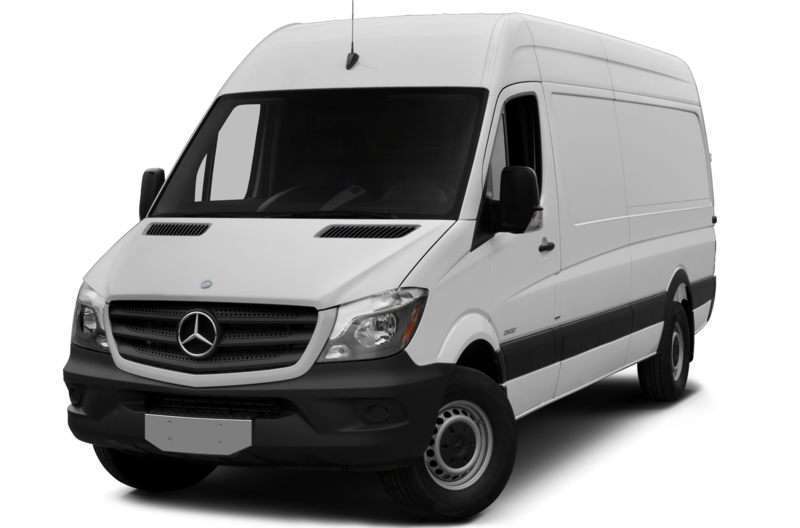Recent Articles
Popular Makes
Body Types
2015 Mercedes-Benz Sprinter Review
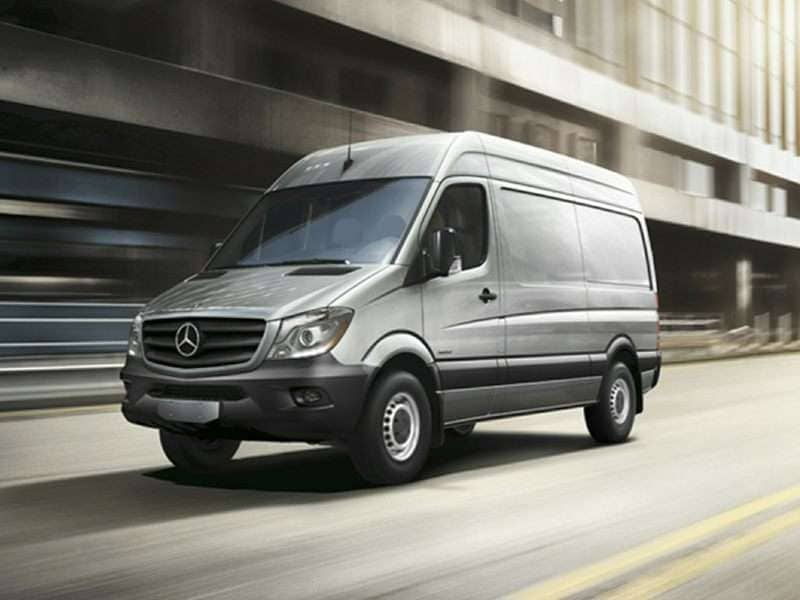
Have you noticed that, until recently, vans haven’t changed much? And have you noticed that, recently, vans are changing a lot? There’s a reason, and it’s largely down to Mercedes.
And chickens.
Fifty years ago — and I promise, this all has something to do with vans — chicken was considered a delicacy in Europe, so America started dumping cheap chickens in the Old World. The European Common Market got miffed at this and slapped a hefty import tax on American poultry, so President Johnson put a retaliatory 25-percent tariff on several European imports, including commercial trucks. And while most items have since been removed from the so-called Chicken Tax, vans remain.
European Flavor
For decades, foreign automakers found innovative ways of worming into the lucrative pick-up market, but no one seemed to care much about vans. The Big Three continued to offer the same ’60s-era designs they’d been pushing for years. Europe was awash in superior van designs, but the Chicken Tax effectively kept them away from our shores.
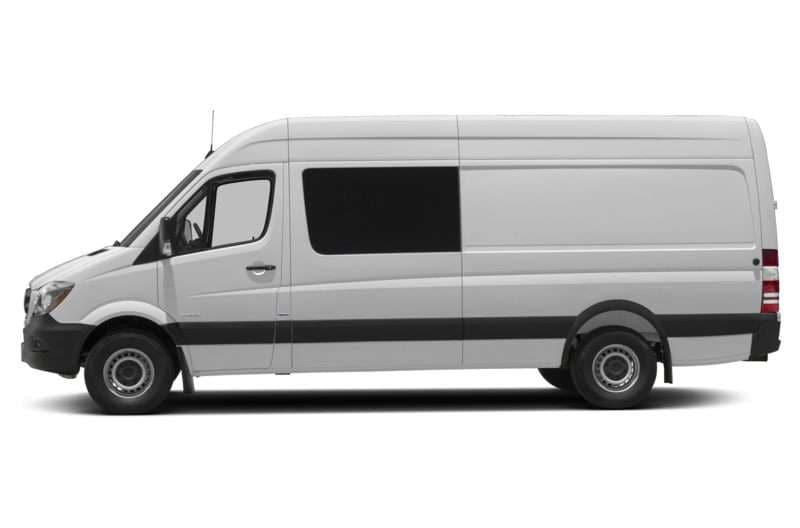
Back in 2001
All that changed in 2001, when Mercedes started bringing in the Sprinter (first as a Dodge, currently as a Mercedes or a Freightliner). Available in multiple lengths and roof heights, the Sprinter was a cathedral that made American vans look like cottages. In the last few years, American automakers have changed their tune: Chrysler is now selling the Fiat-sourced Promaster, while Ford is bringing in its Euro-designed Transit. General Motors‘ old-school vans remain, but rumor has it that change is on the way.
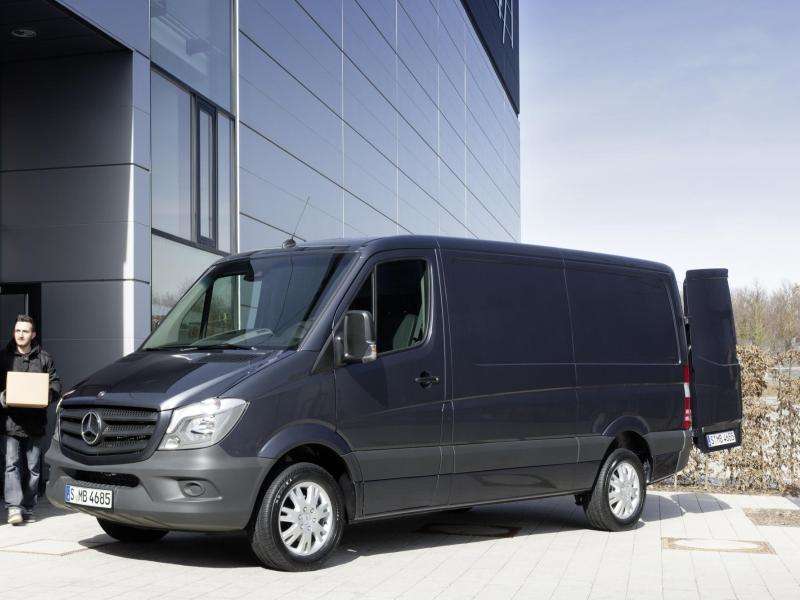
Ever Evolving
Meanwhile, the Sprinter has continued to evolve. It is a massive van, so big that I thought that I would need a ladder to get in and a map to help find the way from the driver’s seat to the rear doors. Sprinters can be ordered with up to 586 cubic feet of cargo space—more than twice as much as the largest Ford Econoline—or in passenger versions with as many as 19 seats. Two wheelbases, three lengths, three roof heights (up to 7 ft. floor-to-ceiling), full body or cut-away cab chassis—the list of possibilities boggles the mind. Mercedes even makes a 4×4 Sprinter with a low-speed low-range and a lifted body. If the Germans can’t take over the world, they are determined to take over the world of vans.
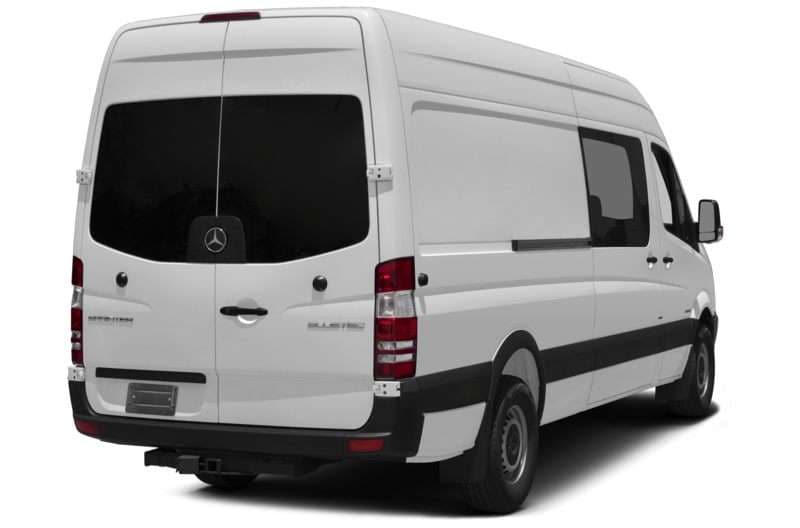
Powerplant
If the Americans had designed a van like this, it would be powered by an offensively huge gas V8 or a dreadfully huge and expensive optional diesel V8. And yet the Sprinter’s engine choices are surprisingly modest: either a 2.1-liter four-cylinder turbodiesel or a 3.0-liter V6 turbo-diesel. Output is 161 hp and 266 lb-ft for the four-cylinder and 188hp/325 lb-ft for the V6, but acceleration is similar with either engine; that’s because the four gets a 7-speed automatic while the V6 only gets a 5-speed. The Sprinter picks up speed quickly around town but tapers off at highway velocities, and if you’d like to try out the Sprinter’s electronically limited top speed of 82 mph, you’re going to need quite a lot of downslope.
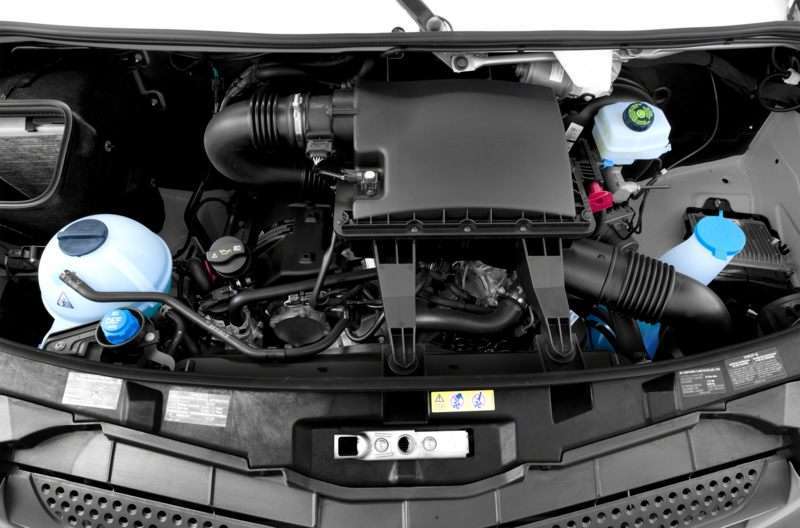
Nifty Electronic Bits
Among the Sprinter’s nifty electronic bits is an electronic stability control system that compensates for load weight and height, determining the van’s center of gravity by the way it responds to the driver’s inputs and greatly reducing the chances of rollover with a heavy load on board. It can also detect sudden crosswinds and help the driver keep the van on course. That’s just plain cool.
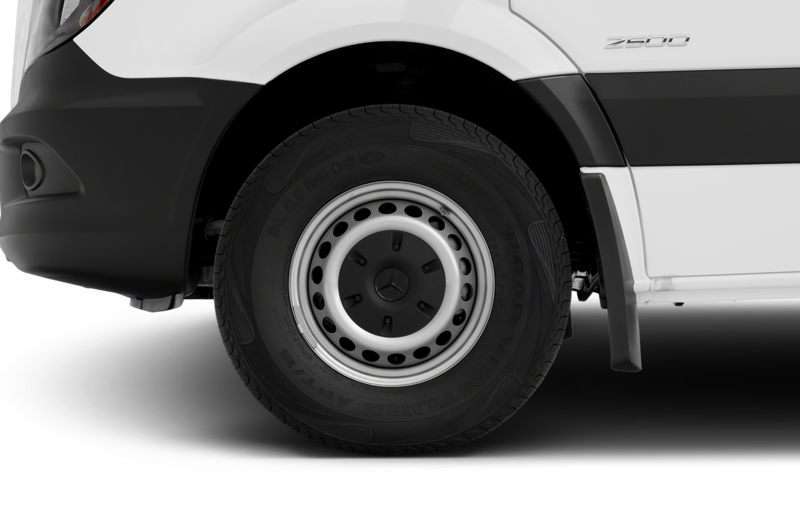
Interior
Less cool is the interior, which has all the charm of a chain-smoking bricklayer with a penchant for off-color jokes and an aversion to showers. The Sprinter is paneled in cheap, hard plastics, though I liked the simplicity of the stereo and (optional) navigation system. (Frankly, I’d like to see it as an alternative to the complicated dial-operated infotainment systems in Mercedes’ cars.) Consumers have been trained that industrial-grade vans need to have industrial-grade interiors, but couldn’t Mercedes at least give the Sprinter driver a comfortable spot to rest a poor body’s left elbow?
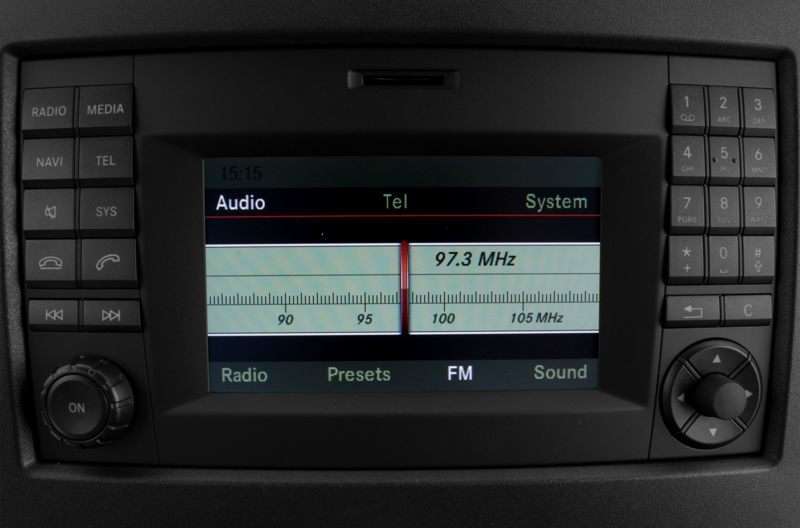
Pricing
A basic low-roof, short-wheelbase Sprinter 2500 cargo van starts at $36,990. That may seem high; it’s six grand more than a basic Ford Transit and seven grand more than an entry-level Ram Promaster. Keep in mind, however, that at those prices the competition gives you a gasoline engine; diesel power adds $6,040 to the Transit and $4,500 to the Promaster, and we haven’t even delved into the Sprinter’s heavier carrying capacity. Once you equip the competition to Sprinter levels, the Sprinter’s price doesn’t seem quite so, er, Mercedes-y.
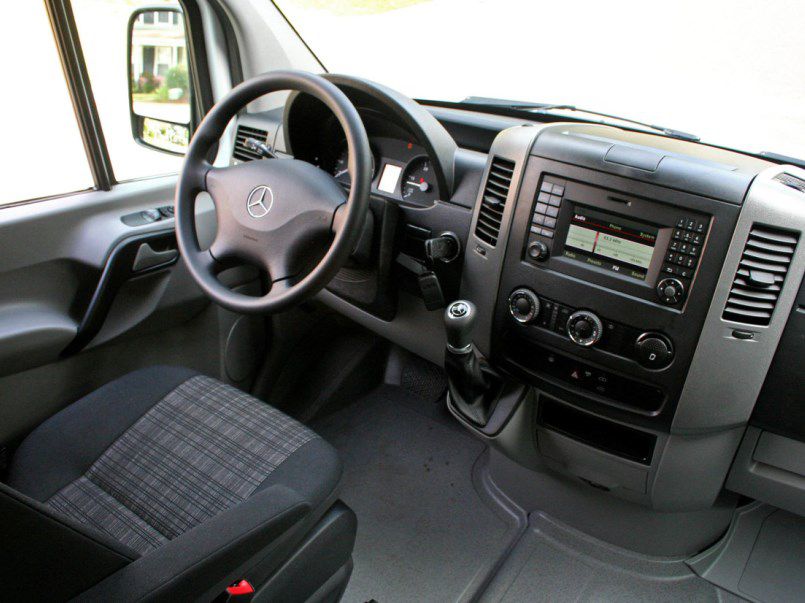
Passage to America
And by the way, you can’t blame the Sprinter’s price on the Chicken Tax. Mercedes builds the Sprinter in Germany, then removes the engine, driveline, and suspension. The van bodies go into a container, the suspension and powertrain bits are boxed up separately, and all are sent (via separate ships) to North Carolina, where each van is reunited with its original parts on what could well be the world’s shortest vehicle assembly line. By importing the Sprinter in kit form, Mercedes gets around the Chicken Tax. (Passenger vans are shipped whole, as they aren’t affected by the tax.)
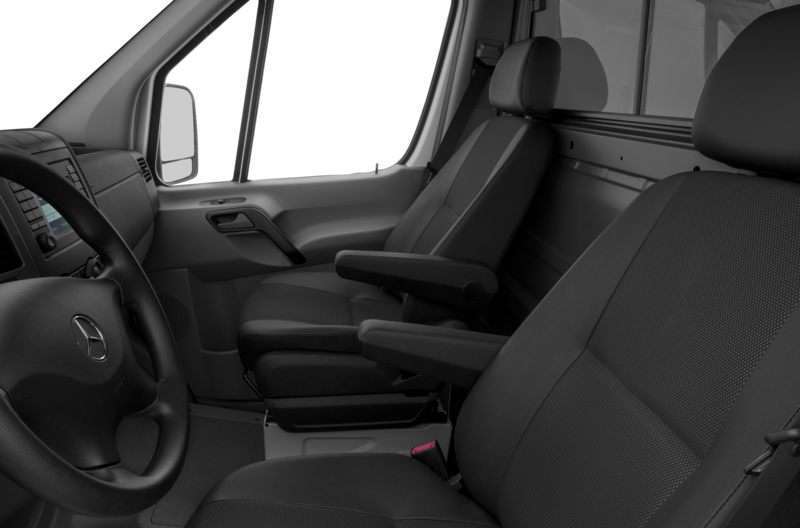
One Heck of a Good Van
One wonders if van ownership might have been a more pleasant prospect had the Chicken Tax been repealed decades ago, as it should have been. At least the plight of the van owner is improving now. Mercedes can take credit for leading the charge to change — and for building one heck of a good van.
